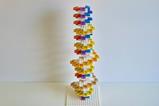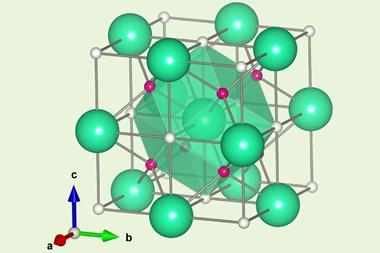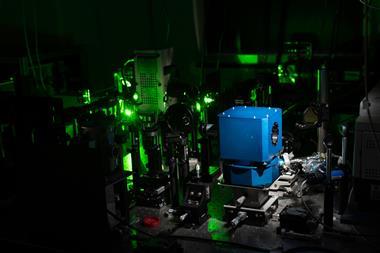A ground-breaking paper claiming to show the first room-temperature superconductor has been retracted by the journal Nature over concerns around its data analysis, following allegations the results were manipulated.
Superconductors are materials that exhibit no electrical resistance and are useful for a host of applications, including NMR machines, quantum computing and particle accelerators. However, currently all superconducting materials require very cold temperatures (below 150K) or extremely high pressures. Room-temperature superconductors would revolutionise how we manipulate electrical charge, and are considered by some to be one of chemistry’s ‘holy grails’.
The retracted paper, by a team led by Ranga Dias from the University of Rochester, US, and Ashkan Salamat from the University of Nevada Las Vegas, US, was published in October 2020, and seemed to have come one step closer to this goal. The team claimed to have found superconductivity in a carbonaceous sulfur hydride (CSH) at a temperature of around 288K (15°C), albeit at an intense pressure of 155GPa – about 1.55 million times Earth’s atmosphere. The result was met with widespread acclaim, with suggestions it could win a Nobel prize, and was seen as heralding a possible new age in superconductors. It has since been accessed more than 100,000 times.
The evidence for superconductivity in the hydride was based on an analysis of resistance and magnetic susceptibility data. However, questions began to emerge in November 2020, when Jorge Hirsch, from the University of California, San Diego, US, asked for the unprocessed susceptibility data, only for his request to be denied. This resulted in Nature adding a disclaimer that there were ‘undeclared access restrictions relating to the data behind [the] paper’, before the authors subsequently released the raw data in December last year.
Hirsch, along with Dirk van der Marel at the University of Geneva, then began a deeper investigation. Their analysis, Hirsch says, showed the team could not have produced those results with the method the paper described, or from the raw data they had obtained. Furthermore, the duo stated, it was not possible to produce the team’s results ‘without using procedures that can only be characterised as data alteration and manipulation’. By then, Hirsch, along with Frank Marsiglio from the University of Alberta, Canada, had also questioned the paper’s resistance data, resulting in a ‘matters arising’ article in Nature in August 2021.
Now, the paper has been retracted, with Nature reporting that ‘some key data processing steps – namely, the background subtractions applied … used a non-standard, user-defined procedure. The details of this procedure were not specified in the paper and the validity … has been called into question.’ The Nature editors conclude that ‘we are of the opinion that these processing issues undermine confidence in the published magnetic susceptibility data as a whole, and we are accordingly retracting the paper.’
Hirsch has welcomed the decision but says that the retraction notice fails to address his allegations. ‘Nature gives the impression that it accepts the claim of the authors that what they say are “raw data” are indeed data measured in a laboratory, with laboratory equipment and a physical sample,’ Hirsch says. ‘In fact, however, we have provided Nature clear mathematical evidence that what the authors say are “raw data” is, in reality, not.’ Hirsch called on the National Science Foundation, which funded the work, and the University of Rochester to ‘engage in a thorough examination of the facts’.
Responding to Chemistry World, Dias highlights that ‘the retraction request does not question the observed physical superconductivity state of the CSH material’, only the methodology, and that the team’s results have been replicated both in terms of properties and the synthesis and determination of the structure used. ‘All of the paper’s authors disagree with the retraction,’ Dias says. ‘We stand by our work and will re-submit the paper with the raw data plot of susceptibility per Nature’s recommendation.’
References
E Snider et al, Nature, 2020, 586, 373 (DOI: 10.1038/s41586-020-2801-z)

















1 Reader's comment